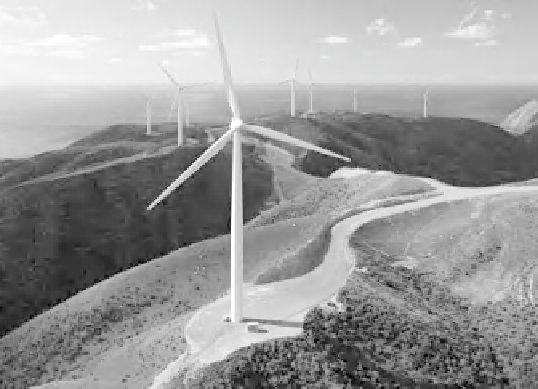Environmental Engineering Reference
In-Depth Information
In the United States about 19 percent of the total energy is spent in food production
(Pimentel and Pimentel, 2008) and 8 percent of the total manufacturing sector is used in
processing (
see
Table 11.3) (Environmental Protection Agency [EPA], 2007a).
Energy sources
Energy sources can be classified according to several criteria, but the most common
classification divides them into renewable and nonrenewable. Renewable sources are those
that can get replenished in a relatively short period of time in comparison to a human's life-
time (less than a century). Nonrenewable sources, on the other hand, are naturally occurring
deposits below the Earth surface that were formed over millions of years and for all practical
purposes can be considered exhaustible without the possibility of regeneration. Nonrenewable
energy is classified as chemical, which include the fossil fuels coal, oil, and gas, and nuclear
(from uranium and other fissionable materials).
Renewable energy comes from the sun, gravity, and nuclear reactions in the Earth's crust.
Energy from the sun can be captured directly (e.g., with solar collectors) or indirectly, for
example, through the production of biomass or biofuels. Gravity is potential energy that can-
not be harvested directly. Energy can be obtained from gravity by capturing the energy con-
tained in the movement of a fluid such as water (e.g., tidal power) or by combining gravity
with energy from the sun to produce hydropower. Nuclear reactions at great depths of the
Earth produce geothermal heat that sometimes reaches the surface as hot water or steam in
limited parts of the world. Even when the Earth's core is cooling, for all practical purposes,
heat from the core can be considered vast, and the renewability of this resource is contingent
on a continuous supply of water to the depth of the soil (Chapman, 1989).
Based on standard use, energy is sometimes classified into conventional and alternative.
Conventional energy
includes resources that have been used as mainstream sources including
coal, hydro, nuclear, gas, and oil.
Alternative energy
sources are generally renewable sources
such as biofuels, solar, wind, geothermal, and tidal, but they may also come from nonrenewable
sources such as oil shale and oil sands.
Picture 11.1
Wind turbines at the West Wing Wind Farm near Wellington, New Zealand.
© Siemens AG, Munich/Berlin.





